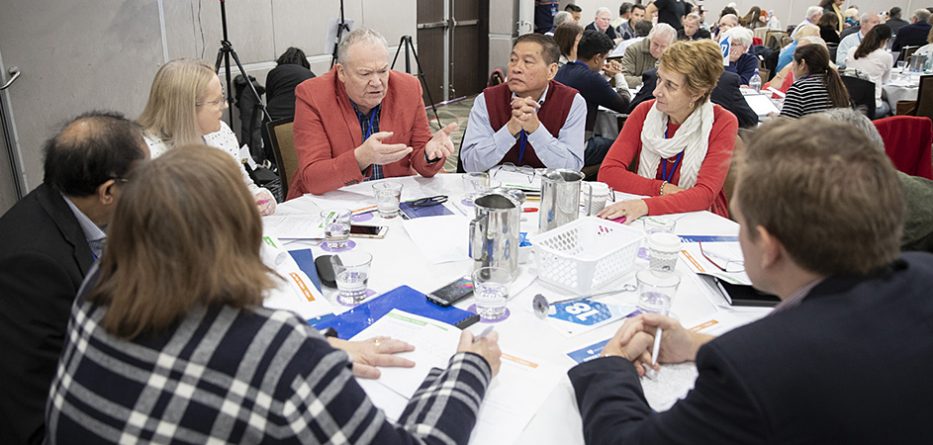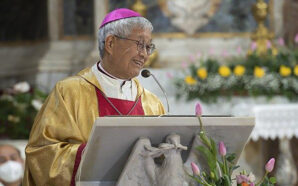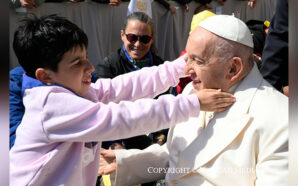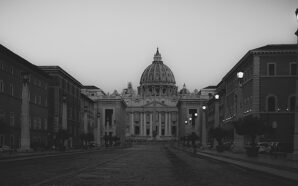Plenary Council Participation and Reception: Synodality and Discerning the Sensus Fidelium
By Reverend Associate Professor Ormond Rush
Our Plenary Council will be effective only if we embrace what I call “a spirituality of synodality.” Institutional structures such as plenary councils require particular spiritual dispositions on the part of all, if a synodal church is to be realised. Vatican II spoke of “a collegial spirit (affectus collegialis)” among the college of bishops (LG 23). In the end, synodality will only be fully realised when a genuine “synodal spirit” pervades all levels of the Catholic Church, from the single baptised Catholic to the pope. In his greeting to the bishops at the start of the 2014 synod, Pope Francis spoke of a “general and basic condition” for genuine synodality: the freedom to speak honestly. [16] “It is necessary to say with parrhesia (boldness) all that one feels.” However, this must be accompanied, he said, by another condition: listening with humility and with an open heart to what others say with honesty, what he calls “the gift of listening.” [17] “Synodality is exercised with these two approaches.” We could call them “synodal virtues”.
The willingness to listen to viewpoints contrary to one’s own is therefore vital. One of the more striking passages in Evangelii Gaudium is when Pope Francis appeals to the image of a polyhedron. [18] It appears in his discussion of one of his favourite axioms: “the whole is greater than the part, but it is also greater than the sum of all its parts” (EG 235). He makes a distinction between two possible models for understanding this relationship. The first is a sphere “which is no greater than its parts, where every point is equidistant from the centre, and there are no differences between them” (EG 236). He rejects this model. His preferred model is the polyhedron, “which reflects the convergence of all its parts, each of which preserves its distinctiveness. Pastoral and political activity alike seek to gather in this polyhedron the best of each” (EG 236).
With regards to listening to the sensus fidelium, he draws two conclusions from this model of the polyhedron, which have implications for the preparatory and celebratory stages of our Plenary Council: the importance of listening to everyone in the church (all of the facets constitute the polyhedron); and the importance of diversity for the health of the church (all sides are distinct). With regards to the first, in a Wednesday address in St Peter’s, he states: “no one is useless in the church.” [19]
In the passage on the polyhedron in Evangelii Gaudium, he goes so far as to say “even people who can be considered dubious on account of their errors have something to offer which must not be overlooked” (EG 236). We are a long way here from the axiom oft-quoted at Vatican II from those who wanted to condemn atheists, other non-Christian believers, and other Christian believers: “error has no rights.” [20]
Here his concern is attention to “the whole”: “The Gospel has an intrinsic principle of totality” (EG 237). The “fullness and richness [of the Gospel] embrace scholars and workers, businessmen and artists, in a word, everyone” (EG 237). With regards to the second, diversity, here his concern is attention to “the parts.” If “the whole is greater than the part, [which] is also greater than the sum of its parts,” “there is no need, then, to be overly obsessed with limited and particular questions. We constantly have to broaden our horizons and see the greater good which will benefit us all. But this has to be done without evasion or uprooting” (EG 235).
Part five will be published tomorrow.
To read part three, click here.
Fr Ormond Rush is a priest of the Diocese of Townsville, and lectures in theology at the Brisbane campus of Australian Catholic University (ACU).
This paper originally appeared in Edition 27 of the Plenary Post from the Plenary Council 2020. Reproduced with permission.
[16] Greeting of Pope Francis to the Synod Fathers during the First General Congregation of the Third Extraordinary General Assembly of the Synod of Bishops, 6 October 2014, https://w2.vatican.va/content/francesco/en/speeches/2014/october/documents/papa-francesco_20141006_padri-sinodali.html
[17] In the Oct 17, 2015 address, but quoting his address in St Peter’s Square on October 4, 2014, the eve of the first synod, http://w2.vatican.va/content/francesco/en/speeches/2014/october/documents/papa-francesco_20141004_incontro-per-la-famiglia.html
[18] A polyhedron is a round body with several sides or facets, much like a round diamond, or a soccer ball.
[19] Pope Francis, “Where We Are All Equal and No One Is Useless,” L’Osservatore Romano (3 July 2013) 3. Pope Francis was giving a catechesis on the Holy Spirit in the church: “[The church is] the Temple of the Holy Spirit, the Temple in which God works, the Temple in which, with the gift of Baptism, each one of us is a living stone. This tells us that no one in the Church is useless… we are all necessary for building this Temple! No one is secondary. No one is the most important person in the Church, we are all equal in God’s eyes. Some of you might say ‘Listen, Mr Pope, you are not our equal’. Yes, I am like each one of you, we are all equal, we are brothers and sisters!”
[20] On the discussion of this during Vatican II, see John W. O’Malley, What Happened at Vatican II (Cambridge, Mass.: Belknap Press of Harvard University Press, 2008), 211–18. 12








